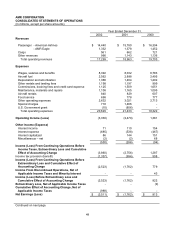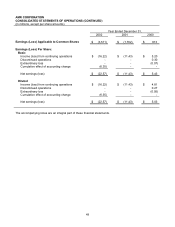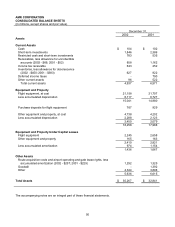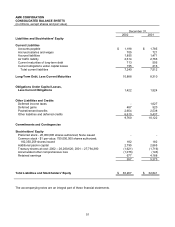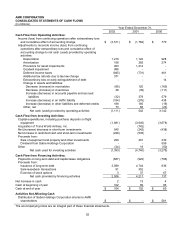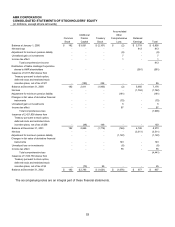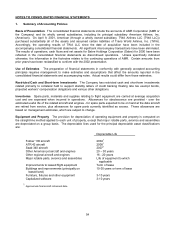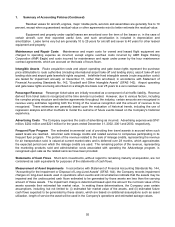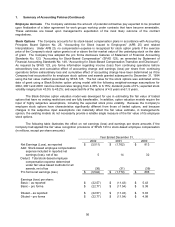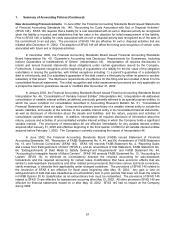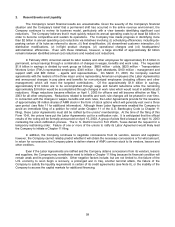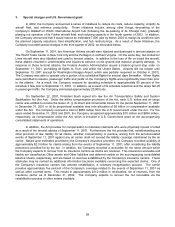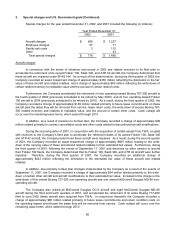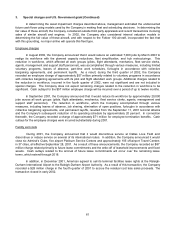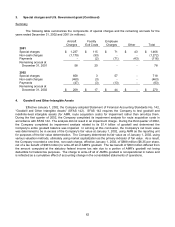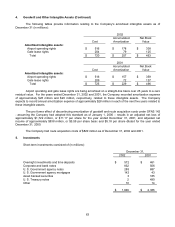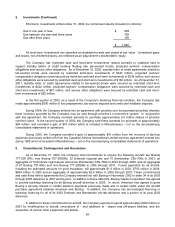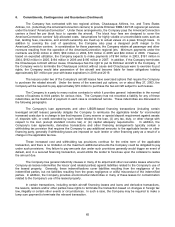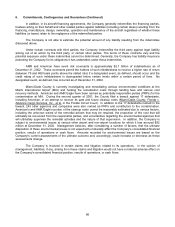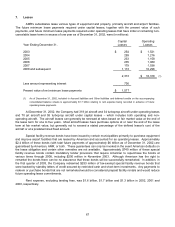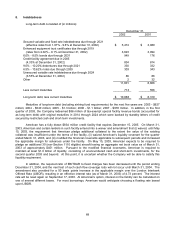American Airlines 2002 Annual Report Download - page 60
Download and view the complete annual report
Please find page 60 of the 2002 American Airlines annual report below. You can navigate through the pages in the report by either clicking on the pages listed below, or by using the keyword search tool below to find specific information within the annual report.58
2. Recent Events and Liquidity
The Company’s recent financial results are unsustainable. Given the severity of the Company's financial
situation and the Company’s belief that a permanent shift has occurred in the airline revenue environment, the
Company continues to review its business model, particularly with a view towards identifying significant cost
reductions. The Company believes that it must quickly reduce its annual operating costs by at least $4 billion in
order to become competitive and sustain its operations. The Company has made progress in identifying more
than $2 billion in annual operating cost reductions via initiatives involving: (i) scheduling efficiencies, including de-
peaking certain of its hubs as referred to above, (ii) fleet simplification, (iii) streamlined customer interaction, (iv)
distribution modifications, (v) in-flight product changes, (vi) operational changes and (vii) headquarters/
administration efficiencies. Even with these initiatives, however, a large shortfall of approximately $2 billion
remains between identified annual cost reductions and needed cost reductions.
In February 2003, American asked its labor leaders and other employees for approximately $1.8 billion in
permanent, annual savings through a combination of changes in wages, benefits and work rules. The requested
$1.8 billion in savings is divided by work group as follows: $660 million - pilots, $620 million - Transportation
Workers Union (TWU) represented employees, $340 million - flight attendants, $100 million - management and
support staff, and $80 million - agents and representatives. On March 31, 2003, the Company reached
agreements with the leaders of the three major unions representing American employees (the Labor Agreements)
and announced changes in pay plans and benefits for non-unionized employees (including officers and other
management) which will meet the targeted contributions. Of the approximately $1.8 billion in savings,
approximately $1.0 billion are to be accomplished through wage and benefit reductions while the remaining
approximately $.8 billion would be accomplished through changes in work rules which would result in additional job
reductions. Wage reductions became effective on April 1, 2003 for officers and will become effective on May 1,
2003 for all other employees. Reductions related to benefits and work rule changes will be phased in over time.
In connection with the changes in wages, benefits and work rules, the Labor Agreements provide for the issuance
of approximately 38 million shares of AMR stock in the form of stock options which will generally vest over a three
year period (see Note 11 for additional information). Although these Labor Agreements enabled the Company to
avoid an immediate filing of a petition for relief under Chapter 11 of the U.S. Bankruptcy Code (a Chapter 11
filing), these Labor Agreements must still be ratified by the unions’ memberships. At the time of the filing of this
Form 10-K, the unions have put the Labor Agreements out for a ratification vote. It is anticipated that the official
results of the voting will be formally announced on April 15, 2003. A group of pilots filed a lawsuit on April 14, 2003
contesting the union ratification process. The U. S. District Court in Fort Worth, Texas denied the request for a
temporary restraining order. Failure of one or more of the unions to ratify its Labor Agreement would likely lead
the Company to initiate a Chapter 11 filing.
In addition, the Company continues to negotiate concessions from its vendors, lessors and suppliers;
however, the Company cannot reliably predict whether it will obtain the necessary concessions or for what amount.
In return for concessions, the Company plans to deliver shares of AMR common stock to its vendors, lessors and
other creditors.
Even if the Labor Agreements are ratified and the Company obtains concessions from its vendors, lessors
and suppliers, the Company may nonetheless need to initiate a Chapter 11 filing because its financial condition will
remain weak and its prospects uncertain. Other negative factors include, but are not limited to, the failure of the
U.S. economy to soon begin a recovery, a prolonged war in Iraq, another terrorist attack, the failure of the
Company to satisfy the liquidity requirement in certain of its credit agreements (see Note 8), or the inability of the
Company to access the capital markets for additional financing.


